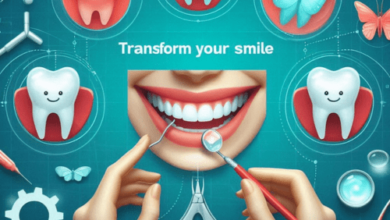
Speaking and eating are everyday activities that are facilitated by our jaws. Any injury or pain to the jaw joint or TMJ can bring about serious discomfort in our lives.
This issue has to be resolved at the earliest because the pain could worsen if left unattended for an extended period.
The orthodontist at Pavlo Orthodontics evaluates the Temporomandibular joints for any signs or symptoms during dental assessment for invisalign or braces treatment. Patients with locking or clicking joints can benefit from understanding how the TMJ disc moves.
If you have TMD there are various strategies you can employ to manage this condition.
Lifestyle changes
· Mind your posture
Poor posture, especially hunching your shoulder and neck can strain your jaw muscles. So, practice good posture – keep your shoulders and back relaxed, your ears must align with your shoulder sand head balanced over your spine.
· Relaxation techniques
Stress triggers TMJ pain. Deep breathing and meditation can help you to reduce the stress. Progressive muscle relation technique helps to reduce muscle tension in your jaw.
· Diet adjustment
Choose soft foods that need minimal chewing. Avoid chewing raw vegetable and hard nuts. Sticky candies Avoid sticky or chewy candies, raw vegetables and hard nuts. Cut your food into small pieces, which lessens the strain on your jaw while chewing.
· Sleep habits
Use supportive pillows to keep your spine and neck aligned. Never sleep on your stomach because it can put undue pressure on your jaw.
· Habits to stop
Non-functional jaw activities like chewing on pens or biting nails or sucking thumbs can stress your jaw and slow the healing.
Be mindful of these unconscious habits! If you are in a habit of resting your jaw in your hands, avoid it because it can affect aggravate the symptoms.

Self-care practices
Heat & cold therapy
Warm therapyincreases blood flow and relaxes jaw muscles, while cold therapy can help to reduce swelling and inflammation.
Use both to address different aspects of the condition. So, change heat and cold compress [use thin cloth in between compress and skin] within 15 minutes intervals.
· Jaw exercises
Jaw exercises involve stretching, massaging and strengthening of your jaw muscles. You can do it several times in a day to ease the pain.
It helps to enhance jaw mobility and prevent locking. It reduces pressure on your jaw muscles and enhances overall functions. Before you start a regime, consult a dentist or physical therapist.
Professional interventions
· Mouth guards
Mouth guards also known as night guards are used to manage jaw pain. They prevent teeth grinding or clenching that can damage soft teeth tissues. It helps to stabilize the jaw and relax the surrounding muscles.
· Physical therapy
Physical therapist provides targeted treatments like ultrasound therapy and moist heat to enhance jaw function and manage pain.
· Dental treatments
If your TMD is due to bite issues or misaligned teeth, then your dentist will recommend corrective dental procedures like braces or crowns.
Seek professional help
While some TMJ symptoms can improve with self-care practices, it is crucial to have proper diagnosis and treatment.
Consult a healthcare professional because early intervention can prevent complications and ensure a more effective management plan.
A doctor or dentist can perform physical examination, discuss your symptoms and recommend more investigation like X-rays or MRI scans. Based on your severity, they will develop a customized treatment plan.
It is frustrating to live with TMD but with right approach, you can manage the symptoms and live a comfortable, pain-free life!




